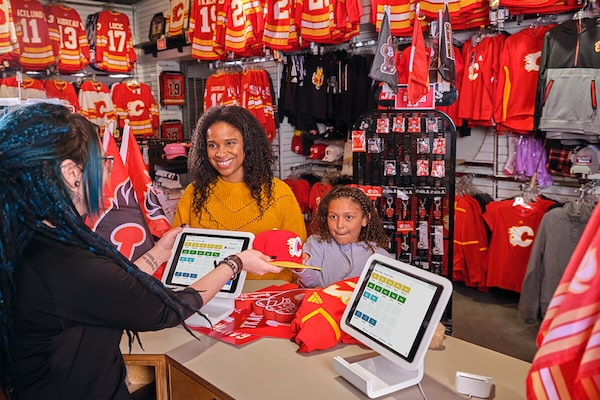
“[Automation] is about freeing up back-end tasks so employees can focus on more valuable work, such as customer engagement and in-store experiences”Supplied
Labour shortages are impacting almost every customer-facing business, and retailers and restaurants are under particular strain.
To combat staffing woes, some companies have applied measures such as reduced hours, temporary location closures, and fewer services. Many are eyeing a longer-term solution to the problem: automation.
Ninety three per cent of Canadian retailers use or plan to use automation technology to decrease hands-on employee time for a variety of functions, including inventory management, payroll and benefits, loyalty programs and more, according to the “2022 Future of Retail” report by Square, a technology company providing omnichannel solutions to businesses.
While automation in the workplace used to evoke images of robots taking over jobs from humans, the report suggests automation is no longer a “bad word.” It states that automation is helpful – not only to ensure staffing gaps get filled, but to enable employees to take on more impactful work that advances the business, improves customer service, and provides growth opportunities.
“It’s not about replacing staff with automation,” says Cole Baldwin, sales leader at Square. “It’s about freeing up back-end tasks so employees can focus on more valuable work, such as customer engagement and in-store experiences.”
Automation can also pay off in omnichannel commerce, which kicked into high gear during the COVID-19 pandemic. Consumers value the ability to buy online and pick up or return in store, but operating in this environment can put greater pressure on employee workloads and cause headaches for businesses. With automation tools, businesses can make their omnichannel operations easier and more streamlined.
Square is helping companies of all sizes onboard this must-have technology. The platform’s singular system takes care of all the (sometimes tedious) ins and outs of a business, from online transactions to inventory. A single ecosystem means easier onboarding and training for staff – a bonus when trying to attract and retain employees.
“Not only do we build our own hardware, we process our own payments. We have all of our own first-party point-of-sale solutions, including additional software for loyalty programs, a customer directory, gift cards, and inventory,” Baldwin says. “It can be quite robust and Square is able to support all of that within one ecosystem.”
The current labour shortage is a powerful motivator for automation, but it also makes sense, from a business perspective, to use workers to their full potential. Certain industries that are feeling the pinch of today’s labour shortages might be the biggest beneficiaries of automation adoption.
For instance, 85 per cent of restaurants are currently reporting staffing issues, according to Square’s “2022 Future of Restaurants” report. Similarly, 48 per cent of retailers are concerned about attracting and retaining employees. The talent crunch means these businesses have to get creative by offering higher wages, benefits or bonuses not traditionally seen in these industries – and that can be expensive.
By leaning on technology and automation to help place orders, track inventory, and create schedules, restaurants, retailers and other businesses can use their existing staff more efficiently, which can in turn keep their costs down and their staff less stressed. Businesses can even use data to ensure employees are being scheduled accordingly, putting more people to work during busy times and not overscheduling during downtimes.
“By automating all of those pieces of technology and making it all happen on the back end without human involvement, we can then free up that employee’s time to focus on fulfillment, communicating directly with the customer, or one of the additional 100 responsibilities that retailers, restaurants and other employees are now tasked with,” Baldwin says.
That leaves the question of how to train staff on automation tools. Baldwin explains that whether a company’s workers prefer online or in-person training, Square can deliver the required knowledge to get businesses up and running quickly and effectively through its global installation and training team.
“We offer many online tutorials, recorded webinars, and articles online. We also host live, free webinars with our training team – anyone can join in and be guided through different pieces of the ecosystem.”
Square’s broad range of offerings speak to the company’s own evolution since its inception in 2009. While many people know Square for its payment system, often seen in places such as farmers’ markets and cafes, the company has evolved its solutions to also support the needs of bigger companies.
“We still support and care deeply for small, independent businesses, but we’ve grown substantially upmarket, especially in Canada,” Baldwin says. “We’re supporting some of the largest restaurant groups and retail operations across North America and around the world, and continue to find ways to help businesses get ready for the future.”
To find out more, visit www.squareup.com.
Advertising feature produced by Globe Content Studio with Square. The Globe’s editorial department was not involved.